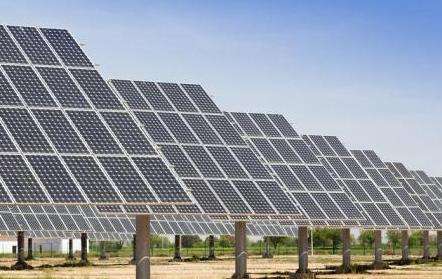What are the reasons for the different tax rates on tap water?
Water treatment plants (manufacturers) that sell self-produced tap water can choose a rate low tax of 9% or a simple tax rate of 3%. %; water companies (non-producing companies) must choose the simplified collection rate of 3% when selling tap water. Water companies that are general value added tax taxpayers pay VAT on tap water sales at the collection rate of 3%; the simplified method, and VAT is not deductible on the purchase of tap water. The value added tax indicated on the tax deduction certificate. The unit is a general value added tax taxpayer. The water tax rate is 13%. Your unit charges the tenant a tap water fee. The applicable tax rate for collecting water charges is 13%. Forhe following self-produced goods sold, you can choose to pay value-added tax at the rate of 6% according to the simplified method: 1. Electricity produced by small hydropower units at or below the county level refers to construction from various investment entities. Small hydroelectric units with an installed capacity of less than 50,000 kilowatts (including 50,000 kilowatts after May). Since 1, 2018, tap water is now subject to a 10% value added tax.
1. Water Company You can choose to pay value added tax at the rate of 13%;
< p>2. If the water company is a small taxpayer, the collection rate is 3%;3. If you choose to collect value added tax using the simple collection method The applicable tax. The tax rate of 13% concerns general taxpayers and the applicable tax rate of 3% concerns smalls taxpayers. Small taxpayers can also contact the tax office to request the issuance of VAT. used to deduct 3% value-added tax when remitting to the other company.
How many types of value-added tax rates can be divided into?
Value - The added tax rate refers to the value added tax which should be the ratio between the overall amount of tax on the taxed products and the turnover.
The VAT rates can be divided into the following types:
< p>(1) The taxpayer sells or imports goods, except for the following Except for the provisions of points 1 and 3, the rate d The tax is 16%.(2) When taxpayers sell or import goods. following products, the tax rate is 11%: grain, edible vegetable oil, tap water, heating, air conditioning, hot water, coal gas, liquefied petroleum gas, natural gasel, biogas, coal products for residential use, books, newspapers, magazines, animal feed, fertilizers, pesticides, agricultural machinery, agricultural films, agricultural products and other goods specified by the State Council.
( 3) When taxpayers export goods, however, the tax rate is zero unless otherwise stated; stipulated by the State Council.
(4) The tax rate for taxpayers providing processing, repair and repair services is 16%. Taxpayers operate simultaneously with different tax rates on taxable goods or services.
< p>What are the reasons for the different tax rates on tap water? Thanks to the publisher of this article, do you know the reasons for the different tax rates on tap water? Is it because different taxpayers adopt different methods of paying taxes? different, and therefore there are also differencesnces in the deduction of value added tax. Thank you all, this article is finished, see you in the next issue.According to the regulations in force, general. taxpayers can choose to follow the simplified method VAT calculation and payment methodsThere are mainly the following four situations:
(1) General taxpayers sell self-produced goods;
(2) General taxpayers from specific industries sell specific goods;
(3) General taxpayers sell their own used items;
(4) Specific taxable services for general taxpayers under the “VAT to VAT” pilot program.
Simple taxation, that is, the simplified taxation method, is a general VAT taxpayer. Due to the particularity of the sector, it is not possible to obtain input VAT invoices for raw materials or goods, hence VAT. est calculated by the input and output method.The tax burden after the amount of tax payable is too high, so special industries are subject to value-added tax at a simplified tax rate.
Additional information:
General taxpayers who sell the following self-produced goods can choose to pay VAT at the rate of 3% in accordance with the simplified regime. method:
1. Electricity produced by small hydroelectric units at or below the county level. Small hydropower units refer to small hydropower units with an installed capacity of less than 50,000 kilowatts (including 50,000 kilowatts) built by various investment entities.
2. Sand, earth and stone used in construction and the production of building materials.
3. Bricks, tiles and lime (excluding solid clay bricks and tiles) producedcontinuously from sand, soil, stone or other self-extracted minerals.
4. Biological products made from microorganisms, microbial metabolites, animal toxins, human or animal blood or tissues.
5. Tap water.
6. Commercial concrete (limited to cement concrete produced with cement as raw material).
7. Apheresis stations that are general value added tax taxpayers and sell non-clinical human blood can calculate the tax liability using a simple method and a collection rate of 6%, but they are not permitted . issue special value added tax invoices to third parties; The tax payable can also be calculated according to the value added tax rate using the input tax from output tax method.
Once a general taxpayer has chosen the simplified method to calculate and pay VAT, cellThis cannot be modified within 36 months.
Reference materials: Simple Collection Baidu Encyclopedia













